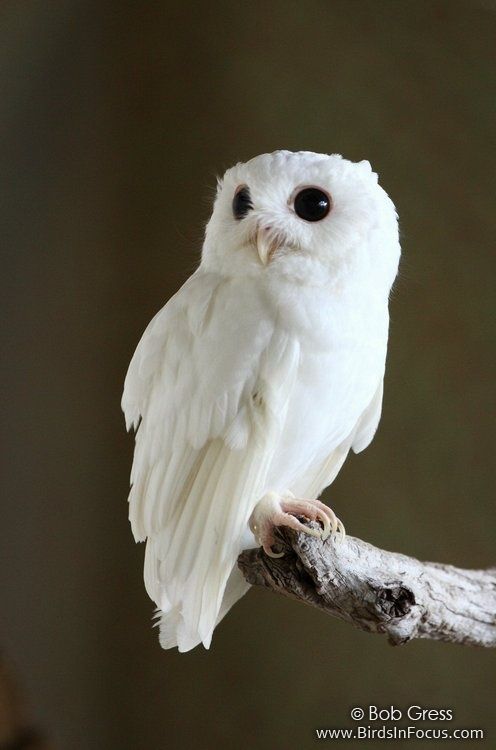Have you ever encountered a ghost in the forest, a spectral silhouette flitting between the trees? Perhaps what you glimpsed wasn’t a phantom, but a creature of startling rarity: the albino Eastern Screech Owl. These avian enigmas, draped in plumage of purest white, present a fascinating case study in genetics, survival, and the sheer unpredictability of nature.
The Eastern Screech Owl, typically a master of camouflage in mottled grays and browns (or rufous red in some morphs), suddenly loses its advantage when robbed of pigment. Their mottled plumage is an adaptation honed over millennia, allowing them to blend seamlessly into the bark of trees, becoming virtually invisible to both predators and prey. An albino Eastern Screech Owl, however, stands out like a beacon.
Understanding Albinism: A Genetic Anomaly
Albinism, at its core, is a genetic condition. It’s characterized by a complete or near-complete absence of melanin, the pigment responsible for coloration in skin, hair, and eyes. This deficiency arises from mutations in genes involved in melanin production. To exhibit albinism, an individual must inherit two copies of the recessive albino allele, one from each parent. If only one copy is inherited, the owl will be a carrier of the trait but will display normal coloration. A fascinating dance of genetics plays out behind the scenes.
The Perils of Purity: Survival Challenges for Albino Owls
The world is not kind to albinos, and these owls face a gauntlet of challenges, beginning with predation. An albino owl lacks the camouflage of its normally-pigmented counterparts, rendering it far more conspicuous to predators such as hawks, eagles, and larger owls. Simply put, they are easier to spot. Finding prey also becomes more difficult. Camouflage is essential for ambushing insects, small mammals, and other creatures that form the basis of the Eastern Screech Owl’s diet. The stark white plumage hinders their ability to remain undetected, reducing their hunting success. The evolutionary calculus is unforgiving.
Furthermore, albinism can be associated with other physiological challenges. Melanin plays a role in eye development, and its absence can lead to vision problems, including increased sensitivity to light (photophobia) and impaired depth perception. These visual impairments compound the difficulties of hunting and navigating their environment. Owls already rely heavily on their exceptional vision; compromised eyesight is a serious handicap. It becomes clear that every hunt is a fight.
Rarity Confirmed: Why Albino Eastern Screech Owls Are Seldom Seen
The very rarity of albino Eastern Screech Owls underscores the challenges they face. These owls are infrequently observed in the wild. Several factors contribute to their scarcity. The recessive nature of the albinism gene means that both parents must carry the gene for an offspring to be albino, which is already a low-probability event. Given the lower survival rate of albino owls due to predation, hunting difficulties, and potential vision problems, they are less likely to reach reproductive age and pass on the albino gene to future generations. Natural selection acts as a powerful filter.
Mortality rates are expected to be higher in these vulnerable birds, therefore, the odds of one reaching adulthood are slim.
Reporting a Sighting: Contributing to Scientific Knowledge
If you are fortunate enough to witness an albino Eastern Screech Owl, it is crucial to document your sighting with photographs or videos and report it to local wildlife authorities or ornithological organizations. Such sightings provide valuable data for researchers studying albinism in wild populations, helping them understand the distribution, survival rates, and specific challenges faced by these rare creatures. Your observation could contribute to a greater understanding of their ecology. Such reports also aid conservation efforts.
Ethical Considerations: Respecting Wildlife
While encountering an albino Eastern Screech Owl is an awe-inspiring experience, it’s essential to maintain a respectful distance and avoid disturbing the bird. Stressing the animal can further compromise its survival. Remember that these creatures are vulnerable and require ample space to hunt and rest. Always prioritize the well-being of the owl and its habitat. Observe from afar, capture your memories responsibly, and allow the owl to continue its precarious existence undisturbed.
The Albino Eastern Screech Owl: A Symbol of Resilience
In the face of overwhelming odds, the albino Eastern Screech Owl endures as a testament to the tenacity of life. While their stark white plumage may seem to mark them for doom, their existence reminds us of the boundless variability within species and the constant struggle for survival that shapes the natural world. These ghostly owls, though rarely seen, offer a powerful glimpse into the complex interplay of genetics, environment, and adaptation. They are more than just a curiosity; they are a symbol of resilience and the enduring power of the wild. Their story is one of survival against the odds.
The albino Eastern Screech Owl serves as a potent symbol of the delicate balance within ecosystems and the importance of conservation efforts. Protecting their habitat, reducing pesticide use, and mitigating other threats can improve the chances of survival for all Eastern Screech Owls, including these rare and vulnerable individuals. The presence of these spectral beings reminds us that every creature, no matter how rare or unusual, plays a role in the intricate tapestry of life. By ensuring their survival, we safeguard the biodiversity and ecological integrity of our planet.
